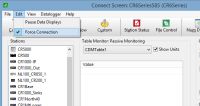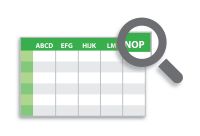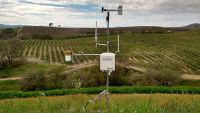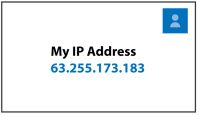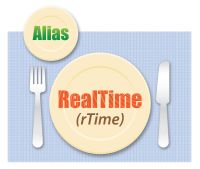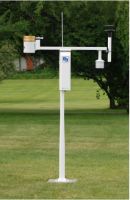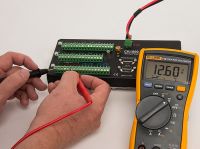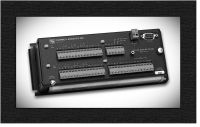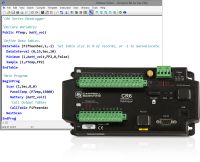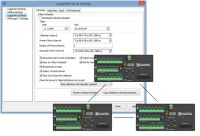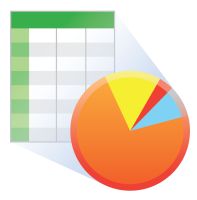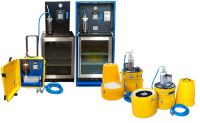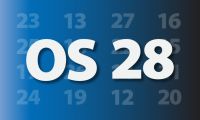Campbell Scientific ブログ 役立つハウツー情報と専門家のアドバイス
Displaying 141 - 160 of 170 articles
A Data Logger Connection Culprit with Benefits
著者: Dana Worley | 最終更新日: 11/18/2015 | コメント: 0
When you have work to do, there’s nothing more frustrating than being unable to connect to your data logger in the field. We’ve all been there: You’re in LoggerNet’s Connect window pressing the Connect button, and you’re met with nothing but the endless flashing “connecting... 続きを読むHow to Rename Field Names for Easier Data Identification
著者: Janet Albers | 最終更新日: 11/11/2015 | コメント: 0
When you view your measurement data in tabular format, such as in View Pro or similar software, are your column headings, or field names, helpful to you? At a glance, do your field names quickly identify the data in the columns? If not, you may... 続きを読むUsing Internet Data to Promote Outdoor Safety
著者: Barbra Utley | 最終更新日: 11/04/2015 | コメント: 0
When it comes to weather conditions, looks can be deceiving. An area that appears to be experiencing mild weather may soon experience conditions that are dangerous to human life. How can you prepare for rapidly changing weather conditions and ensure the safety of those in... 続きを読むMeet Our 2015 Photo Contest Winners
著者: Robin Deissinger | 最終更新日: 10/28/2015 | コメント: 4
We asked our integrators, those folks who sell and install our products, to send us their best photos of Campbell Scientific equipment operating in the field. From all of their submissions, we selected a photo from Western Weather Group as the first-place winner. Runners-up photo... 続きを読むIP Communication Basics for Data Logger Users
著者: Jacob Davis | 最終更新日: 10/14/2015 | コメント: 0
Are you configuring your data logger but confused about all the IP (Internet Protocol) settings? Do you know what the settings mean and what you should set them to? Most of us data logger users do not have a background in computer science or network administration.... 続きを読むServing up the RealTime() Instruction with a Side of Alias Declarations
著者: Janet Albers | 最終更新日: 10/07/2015 | コメント: 2
CRBasic has a full menu of instructions to help you write or edit your data logger program. This article offers a main course of scheduling your data logger actions using the RealTime() instruction with a side dish of making your program easier to read with... 続きを読むNew President’s Commitment to Customers and Employees
著者: Robin Deissinger | 最終更新日: 09/30/2015 | コメント: 0
Have you heard that Campbell Scientific, Inc., has a new president? Are you curious as to what changes might be coming as a result? In this short interview, we learn about the man who will be leading our company forward. Get to Know Rob Campbell On... 続きを読む8 ET Station Components that Need Regular Maintenance
著者: Bruce Smith | 最終更新日: 09/23/2015 | コメント: 0
Like most machines, automated weather stations require regular maintenance to provide you with better performance and longer life expectancy. A weather station designed to calculate evapotranspiration (ET) for commercial agriculture and irrigation scheduling has a number of components that require maintenance and calibration. Based on... 続きを読む6 Steps to Determine if Your Data Logger Needs Repairing
著者: Jason Ritter | 最終更新日: 09/16/2015 | コメント: 2
Is your data acquisition system recording incorrect measurements, but you’re unsure of the cause? Do you wonder if your data logger may need to be repaired? This article discusses some simple tests that you can perform to help determine if your data logger has a... 続きを読むMaking Sense of an Edlog Program File for Your Retired Data Logger
著者: Janet Albers | 最終更新日: 09/09/2015 | コメント: 0
Our retired data loggers are still in use, and some of them use the Edlog programming language. Do you have an Edlog data logger with a .dld compiled program file that you don’t know how to read? Does your .dld file have codes that you... 続きを読むWhy Modbus Matters: An Introduction
著者: Paul Smart | 最終更新日: 09/02/2015 | コメント: 2
You may have heard of Modbus (a widely used communications protocol), but do you know why it is often used with Campbell Scientific data loggers? Do you know how to use Modbus for communication between your data loggers and other Modbus-capable devices? Modbus is just one... 続きを読む5 Things to Know before Discussing Your Data Logger Programming Issue
著者: Janet Albers | 最終更新日: 08/26/2015 | コメント: 0
If you need help programming a Campbell Scientific data logger, here are some things you can do to have a more productive conversation with a Customer Support and Implementation Engineer. At a minimum you’ll want to know: What data logger you’re working with—such as a CR6, CR1000,... 続きを読むSimplify Your LoggerNet Network Setup Using LoggerNet Defaults
著者: Dana Worley | 最終更新日: 08/19/2015 | コメント: 0
Configuring a network of data loggers for communication and data collection in LoggerNet's Setup window can seem like an arduous and tedious task, but it doesn’t have to be. It’s true that you need to complete this task before you can use LoggerNet to connect... 続きを読むCRBasic Tips to Simplify Data Post-Processing
著者: Barbra Utley | 最終更新日: 08/12/2015 | コメント: 3
You’ve collected your measurement data, but how do you easily make sense out of it? How can you simplify the post-processing of your data and start analyzing it sooner? In this article, I’ll explain how adding some code to your CRBasic program can save you... 続きを読むThe Benefits of Using Constants in CRBasic
著者: Janet Albers | 最終更新日: 08/05/2015 | コメント: 0
Why should you use a Constant declaration in your CRBasic program? What is a Constant anyway? In a previous article ("Going Public with Your Variables in CRBasic"), we talked about the Public and Dim variable declarations. Variables are just that—variable; they change. Constants, on the other hand, don’t change;... 続きを読むAutomatic Water Sampler Maintenance Tips
著者: Robin Deissinger | 最終更新日: 07/29/2015 | コメント: 1
If you use automatic water-sampling equipment, consider performing a maintenance check-up during the month of August, which is National Water Quality Month in the U.S. When you perform a maintenance check-up, you can help ensure that your equipment is operating at an optimal level and that you... 続きを読む4 New Ways to Use Array Notation: Copying or Transposing
著者: Janet Albers | 最終更新日: 07/21/2015 | コメント: 0
Copying or transposing has become easier with OS 28 (CR6 OS 1). This new operating system enables you to copy portions of an array to a new location, such as when transposing rows and columns. In this example we start with A(3,2) (3 rows, 2 columns) initialized as... 続きを読む4 Ways to Make Your Data More Secure
著者: Jacob Davis | 最終更新日: 07/15/2015 | コメント: 0
Your data is valuable, and sometimes that value is reduced if unauthorized users have access to it. For this reason, Campbell Scientific data loggers have numerous methods of restricting access to your data. This article is an overview of four available methods for securing your... 続きを読むTroubleshooting Best Practices for Data Acquisition Systems
著者: Jason Ritter | 最終更新日: 07/08/2015 | コメント: 0
Are your current troubleshooting methods not as helpful as you’d like them to be? This article discusses a number of troubleshooting best practices you can use, which may help you determine the source of the problem and resume your data collection more quickly. When I... 続きを読む4 New Ways to Use Array Notation: Complex Scaling
著者: Janet Albers | 最終更新日: 07/01/2015 | コメント: 0
You can perform more complex scaling in an array without needing a For/Next loop. To take advantage of this feature, use OS 28 (CR6 OS 01) or later. In this example program, a unique set of multipliers and offsets is applied to the column of an... 続きを読む











